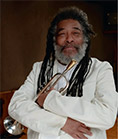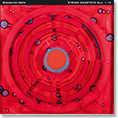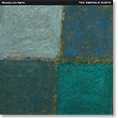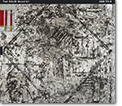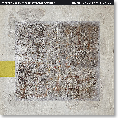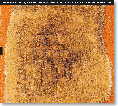DUO NUEVA FINLANDIA
Eero Ojanen and Teppo Hauta-aho both belong to the first generation of modern jazz musicians in Finland. They met in 1962 during the famed Monday night jam sessions organized by Jazz Club 62 in Korso, a small town some 30 kilometers from Helsinki. Teppo Hauta-aho, a young bassist still learning his way around his instrument, actually came from Korso whereas Eero Ojanen traveled to the jam sessions from Helsinki. Regulars also included Hauta-aho´s neighbor, saxophonist and flutist Seppo "Baron" Paakkunainen, and drummer Reino Laine from Helsinki. Other frequent participants at these Monday night jam sessions included saxophonists Unto Haapa-aho and Antero Stenberg, pianist Nacke Johansson and guitarist Juhani Vilkki, all key figures on the Finnish jazz of the 1960s. These early jam sessions at Jazz Club 62 created a bond among the participants that still lasts today.
The common language of these jam sessions was bebop but very soon other influences started to creep in as well. Many of the participants in the jam sessions, including Ojanen and Hauta-aho, attended the John Coltrane Quartet´s concert in Helsinki in 1962 and were blown away by the impact of this new music. With Teppo Hauta-aho, early influences also included Charles Mingus and Scott LaFaro. With Eero Ojanen, early influences included Bud Bowel and other bebop pianists, but increasingly also Bill Evans. Later, Keith Jarrett made a big impression on Ojanen who was a member of the Pekka Pöyry Quartet (with Teppo Hauta-aho and Reino Laine) opening for the Charles Lloyd Quartet (with Keith Jarrett) when it played a concert in Helsinki in 1967.
Throughout the 1960s, Ojanen and Hauta-aho continued to play together, often with Seppo Paakkunainen and Reino Laine also included in the same groups. After Hauta-aho started studying at the Helsinki Sibelius Academy in 1963, their common activities increasingly shifted to Helsinki, including participation in jam sessions at the legendary Old House Jazz Club (aka Mäyränkolo), which featured literally everybody who was somebody in Finnish modern jazz of that time. During the 1960s and early 1970s, Ojanen and Hauta-aho played and recorded together in numerous ensembles including the Juhani Vilkki Sextet and Quartet, the Pekka Pöyry Quartet, the Kaj Backlund Big Band and the Juhani Aaltonen Quartet.
Despite the creative highs of the 1960s and the early 1970s, life was not easy for an improvising musician in Finland. Many jazz musicians chose to take on vocations outside of music whereas others joined some of the more adventurous rock groups emerging around this time. During the early 1970s, Ojanen and Hauta-aho also went their separate ways even though they continued to play together from time to time in more informal settings. Eero Ojanen became a key participant in Finland´s new song movement that had strong political overtones. He also continued his career as a theater composer and musician that had already started in the late 1960s and still continues today. Over the years, Ojanen has written the music for more than 50 plays and a number of movies often utilizing his background as a jazz musician. In fact, the band responsible for backing KOM Theater´s plays and concerts during Ojanen´s tenure at the theater in the 1970s was typically comprised of jazz musicians playing the music they knew best.
Similarly, Teppo Hauta-aho chose to pursue a professional life outside of jazz. After receiving his diploma from the Sibelius Academy in 1970, Hauta-aho continued his career as a member of the Helsinki Philharmonic Orchestra that had already started in 1965 and served as a member of the Finnish National Opera Orchestra from 1975 until his retirement in 1999. During these years, Hauta-aho also became highly regarded for his compositions in the realm of classical music, often featuring the double bass as a solo instrument. However, Hauta-aho never gave up his interest in improvised music and continued to lead or co-lead his own ensembles throughout these years. He also played with many internationally well-known artists, including his membership in Quintet Modern and the Cecil Taylor Quintet.
In 1991, the circle closed with Ojanen and Hauta-aho again returning to frequent collaboration. In addition to performing as a duo at various jazz clubs and festivals during the 1990s, Ojanen and Hauta-aho provided live accompaniment to the performance of classic silent movies, including Finnish films from the 1920s and Luis Buñuel´s An Andalusian Dog, in connection with various film events. In 1995, the two were invited to perform in South America and asked an old friend going back to the times of Jazz Club 62, Seppo Paakkunainen, to join them for the trip that included performances in Chile, Argentina and the United States. Thereby, Trio Nueva Finlandia was born. Trio Nueva Finlandia was active throughout the 1990s and we are fortunate to have concrete evidence of its music in the form of Ha! - What´s going on? (Leo Records), a compilation of live recordings from the years 1995-1997.
Alongside Trio Nueva Finlandia, Ojanen and Hauta-aho also continued to work as a duo and this recording is a result of an impromptu session held in June 1998. At the time, bassist Barre Philips and saxophonist Norbert Stein had just visited Finland playing freely improvised music with Ojanen and Hauta-aho. At least partially, the music on this recording was inspired by the openness and creativity of those sessions. In a way, the music is improvised music at its purest: no recording engineer, no written music, no preconceived notions of what the music is going to be. Just two musicians with their instruments in a room with two recording devices and two microphones ready to capture the moment. Eero Ojanen himself says the following:
"Freely improvised music is music born from the inspiration of the moment. By definition, the music is always unique and you can never repeat it the same way twice. You must live in the moment of the music, or the moment has already gone and you can never catch it again. Of course, there will be new moments but they will never be exactly the same as the one you missed. You cannot jump into the same spot in a flowing river twice. Concentration is crucial.
To play out of nothing. What is it really? You have to start from something: one note, one musical idea or one musical figure. That something then becomes a seed from which improvisation can begin to develop and grow. One musical idea leads to another and after a while you just let the music flow and live a life of its own.
In freely improvised music, we do not make any plans beforehand. That
is why we never know what is coming: will the music start to live, or
is the improvisation only dead fingering of an instrument?
When Teppo and I improvise together, each of us tries to keep his own
thing going while also listening to the other so that the result is
a kind of a contrapunctual twine. It is a discussion where each of us
keeps his own point of view but has respect for what the other one has
to say.
Free improvisation is always a risk, but it is a risk that we love taking!"
So, here you have it. Two old friends swapping stories and reflecting shared and separate experiences. Always with good humor and customary modesty.

